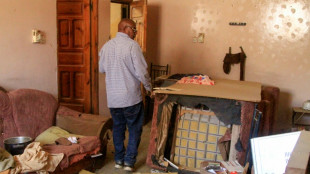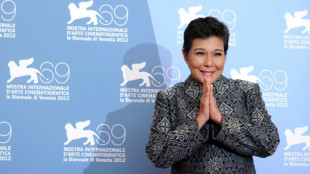
-
 Dodgers star Ohtani skips trip to Texas to await birth of first child
Dodgers star Ohtani skips trip to Texas to await birth of first child
-
US senator says El Salvador staged 'margarita' photo op

-
 Ford 'adjusts' some exports to China due to tariffs
Ford 'adjusts' some exports to China due to tariffs
-
Thomas maintains two-shot lead at RBC Heritage

-
 US to withdraw some 1,000 troops from Syria
US to withdraw some 1,000 troops from Syria
-
Four killed after spring storms wreak havoc in the Alps
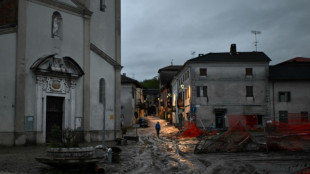
-
 Spurs' Popovich reportedly home and well after 'medical incident'
Spurs' Popovich reportedly home and well after 'medical incident'
-
Trump goes to war with the Fed
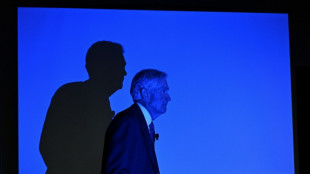
-
 Celtics chase second straight NBA title in playoff field led by Thunder, Cavs
Celtics chase second straight NBA title in playoff field led by Thunder, Cavs
-
White House site blames China for Covid-19 'lab leak'

-
 Norris edges Piastri as McLaren top Jeddah practice
Norris edges Piastri as McLaren top Jeddah practice
-
Trump warns US could ditch Ukraine talks if no progress

-
 Judge denies Sean 'Diddy' Combs push to delay trial
Judge denies Sean 'Diddy' Combs push to delay trial
-
80 killed in deadliest US attack on Yemen, Huthis say

-
 Lebanon says two killed in Israeli strikes in south
Lebanon says two killed in Israeli strikes in south
-
Trump says US will soon 'take a pass' if no Ukraine deal

-
 F1 success is 'like cooking' - Ferrari head chef Vasseur
F1 success is 'like cooking' - Ferrari head chef Vasseur
-
Cycling mulls slowing bikes to make road racing safer

-
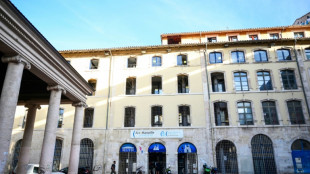 Macron invites foreign researchers to 'choose France'
Macron invites foreign researchers to 'choose France'
-
Klopp 'happy' in new job despite Real Madrid rumours: agent

-
 Alcaraz into Barcelona semis as defending champion Ruud exits
Alcaraz into Barcelona semis as defending champion Ruud exits
-
Vance meets Italy's Meloni before Easter at the Vatican
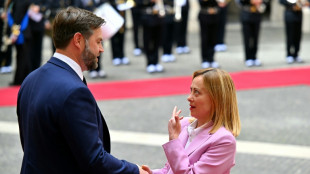
-
 Evenepoel returns with victory in Brabantse Pijl
Evenepoel returns with victory in Brabantse Pijl
-
Maresca confident he will survive Chelsea slump

-
 Mob beats to death man from persecuted Pakistan minority
Mob beats to death man from persecuted Pakistan minority
-
Lebanon says one killed in Israeli strike near Sidon

-
 Arsenal's Havertz could return for Champions League final
Arsenal's Havertz could return for Champions League final
-
US officials split on Ukraine truce prospects

-
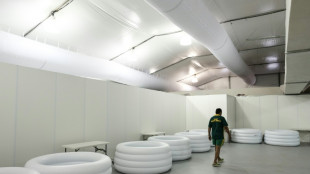 Client brain-dead after Paris cryotherapy session goes wrong
Client brain-dead after Paris cryotherapy session goes wrong
-
Flick demands answers from La Liga for 'joke' schedule

-
 'Maddest game' sums up Man Utd career for Maguire
'Maddest game' sums up Man Utd career for Maguire
-
Trial opens for students, journalists over Istanbul protests

-
 Gaza rescuers say Israeli strikes kill 24 after Hamas rejects truce proposal
Gaza rescuers say Israeli strikes kill 24 after Hamas rejects truce proposal
-
'Really stuck': Ukraine's EU accession drive stumbles

-
 'Not the time to discuss future', says Alonso amid Real Madrid links
'Not the time to discuss future', says Alonso amid Real Madrid links
-
74 killed in deadliest US attack on Yemen, Huthis say

-
 Southgate's ex-assistant Holland fired by Japan's Yokohama
Southgate's ex-assistant Holland fired by Japan's Yokohama
-
Vance meets Meloni in Rome before Easter at the Vatican
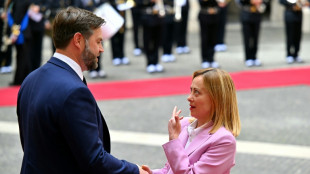
-
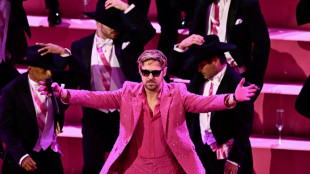 Ryan Gosling to star in new 'Star Wars' film
Ryan Gosling to star in new 'Star Wars' film
-
Hamas calls for pressure to end Israel's aid block on Gaza

-
 Russia says Ukraine energy truce over, US mulls peace talks exit
Russia says Ukraine energy truce over, US mulls peace talks exit
-
58 killed in deadliest US strike on Yemen, Huthis say

-
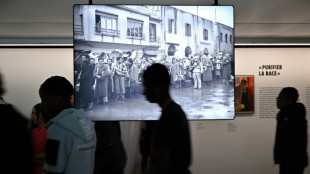 Museums rethink how the Holocaust should be shown
Museums rethink how the Holocaust should be shown
-
Three dead after deadly spring storm wreaks havoc in the Alps
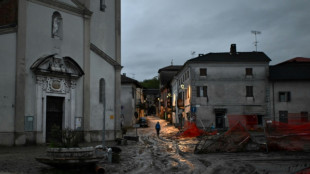
-
 No need for big changes at Liverpool, says Slot
No need for big changes at Liverpool, says Slot
-
Bloody Philippine passion play sees final performance of veteran 'Jesus'
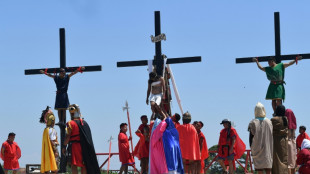
-
 New US envoy prays, delivers Trump 'peace' message at Western Wall
New US envoy prays, delivers Trump 'peace' message at Western Wall
-
Postecoglou sticking around 'a little longer' as Spurs show fight in Frankfurt

-
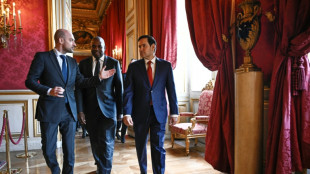 US threatens to withdraw from Ukraine talks if no progress
US threatens to withdraw from Ukraine talks if no progress
-
Tears and defiance in Sumy as Russia batters Ukraine border city
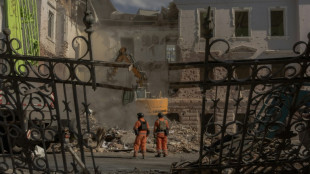

How a 'forgotten' Minnesota monastery inspired 'The Brutalist'
On a snowy prairie in Minnesota stands a monastery like no other. A concrete trapezoid banner encasing a bell tower looms over a giant, beehive-shaped front window composed of hundreds of gently shimmering hexagons.
For half a century, the existence of this modernist masterpiece has been mainly known to the Benedictine monks who worship there, and the hordes of architects who make pilgrimages to Saint John's Abbey Church each summer.
But these days, it is finding new fame as the basis for "The Brutalist," the epic drama about an immigrant architect, haunted by the Holocaust, that is a favorite to win best picture at the Oscars.
The tale of the church's genesis is as unlikely as the movie plot it inspired, spanning titans of architecture, ambitious monks, Vatican reform -- and an almighty row over that beehive window.
Giving tours to guests, abbey member Alan Reed begins by asking his guests: "How could this have happened?"
"That this small college at the time, in the middle of nowhere, run by a group of monks, would hire a world-famous architect... it is an amazing story," he told AFP.
- 'Extraordinary' -
It begins with Baldwin Dworschak, a 44-year-old "buttoned-down" abbot, who inherited stewardship of a monastery rapidly outgrowing its historic grounds in the post-war US boom years of the 1950s.
At a time when the Catholic Church was reforming and modernizing, Dworschak and his advisors saw an opportunity to emulate the pioneering 12th-century European monks who ushered in the then-new Gothic style.
Arranged by a monk who had studied architecture, letters inviting commissions were sent out to Richard Neutra, Walter Gropius, Eero Saarinen and Marcel Breuer -- among the world's leading modernist architects at the time.
Amazingly, several responded, and Breuer -- a Hungarian Jew who had trained at Germany's influential Bauhaus school, and invented the sleek, tubular-steel chairs that furnish trendy offices to this day -- was appointed to oversee the giant church in a far northern corner of the United States.
The design he came up with was "something nobody had ever seen before," said Victoria Young, a professor of architecture at the University of St Thomas in Minnesota, who wrote a book on Breuer's "extraordinary" creation.
Chinese American architect I.M. Pei -- a former student of Breuer -- once wrote that Saint John's Abbey Church would be considered one of the greatest examples of 20th century architecture if it were located in New York, not Minnesota.
- Almighty row -
Brady Corbet, director of "The Brutalist," cites a book written by Hilary Thimmesh, a junior member of Dworschak's committee, as a key source for his movie.
Corbet told AFP he has visited Saint John's, and stumbled upon Thimmesh's memoir while doing extensive reading for the film.
Several parallels are clear: a Jewish architect designing a colossal Christian edifice on a remote US hilltop, in a controversial modernist style.
A major source of dramatic tension in the film occurs when the client -- a millionaire tycoon in the movie, rather than an abbot -- brings in his own designer, undermining the original architect.
In real life, Breuer struck up a friendship with Dworschak, but they fell out when the monks brought in their own stained-glass window designer, spurning the work of Breuer's close friend and former teacher Joseph Albers.
In a bitter letter, Breuer calls the move a "sudden blow" and states it would be "better to do nothing" than go ahead with the monks' preference.
The new design must be "terminated immediately," says another letter -- to no avail.
The power struggle in "The Brutalist" culminates in a horrific act of sexual violence in an Italian marble quarry.
Thankfully, the real-life client and architect quickly made up.
- 'Forgotten' -
Some inevitable Hollywood hyperbole aside, an Oscar-nominated film bringing attention to their monastery's hidden treasure is a source of pride for those connected to Saint John's.
Architect Robert McCarter wrote a book on Breuer "because I felt Breuer had been forgotten, even by the profession, to some degree," he told AFP.
"There are many people who think that Saint John's is, by far, his greatest building. That includes me," he said.
"It's still a place that enough people don't know about," agreed Young.
For the monks of Saint John's today, the film could offer a more practical lifeline.
The church is badly in need of repairs, with some concrete starting to crumble, and steel beginning to rust.
Their order has shrunk, from being the world's largest male Benedictine monastery with 340 monks, to below 100. It is far too few for such a cavernous space.
"If we could raise enough money," the monks could at least heat the church in winter and cool it in summer, said Reed.
And the attention the film is getting?
"The monks certainly are quite impressed," he said.
S.Leonhard--VB

